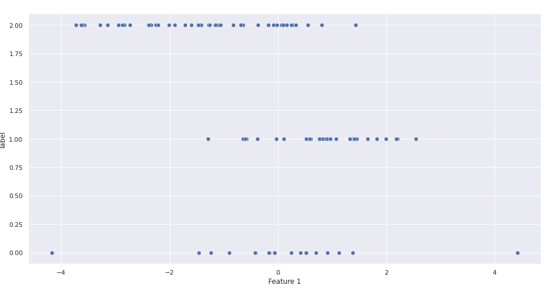In this Tutorial we will learn how to create simulated data from classification in Python. Introduction Simulated data can be defined as any data not representing the real phenomenon but which is generated synthetically using parameters and constraints. W...
In this Tutorial we will learn how to create simulated data from classification in Python.
Simulated data can be defined as any data not representing the real phenomenon but which is generated synthetically using parameters and constraints.
Sometimes while prototyping a particular algorithm in Machine Learning or Deep Learning we generally face a scarcity of good real-world data which can be useful to us. Sometimes there is no such data **ailable for a given task. In such scenarios, we may need synthetically generated data. This data can also be from Lab Simulations.
Mostly represents data as it might be in the real form
Contains less variation of noise, so can be considered an ideal dataset
Useful for quick prototyping and POCs
In this demonstration, we are going to use sci-ki learn to generate simulated data.
Feature Dataframe: Feature 1 Feature 2 Feature 3 Feature 4 Feature 5 Feature 6 \ 0 0.849715 -0.381343 0.650106 -1.439747 -0.442026 0.785891 1 1.841786 0.912779 2.090686 -2.220130 -0.744132 -0.116817 2 -0.915034 -3.324696 -2.613417 0.852612 -3.908363 4.352266 3 1.305116 -1.582905 -0.797318 -0.943912 -1.753893 1.721998 4 0.894486 -0.130399 -0.968311 0.989773 -0.987330 -0.296457 Feature 7 Feature 8 Feature 9 Feature 10 label 0 0.119725 1.156633 0.794226 0.511587 2 1 -0.064624 2.311732 0.178347 1.294978 1 2 3.038898 -2.273558 4.194868 2.693096 2 3 0.817046 0.577196 2.651006 1.826657 2 4 -0.280331 0.096983 1.227921 0.909471 2

Another method is using the Faker python library. Let's see through the below example. Installing the Faker library
id name address \ 7.0 Monique Rodriguez 481 Rebecca Landing Suite 727\nDominiquefurt, ... 4.0 Elizabeth Johnson 62492 Zimmerman Crest Apt. 047\nPort Jerome, W... 18.0 Max Rangel 4379 Obrien Curve\nD**istown, IA 02341 31.0 Tammie Kent 4866 Angela Turnpike Apt. 658\nNorth Sheilabor... 42.0 James Johnston 26827 Jeremiah Alley\nFreystad, SC 86902 21.0 Shawn Robles 137 Jessica Ridges Apt. 436\nWilliamburgh, AZ ... 13.0 Stephen Hodges Unit 9799 Box 0625\nDPO AA 94415 91.0 Eric Lewis PhD 4711 Nicholas Loaf\nWest Lisa, UT 28944 68.0 Matthew Munoz 37836 White Crest\nGonzalezport, NC 75320 34.0 Lawrence Anderson 76712 Garza Mills Apt. 751\nPort Penny, CT 43042 latitude longitude target 0 60.574796 109.367770 clerk 1 84.7225155 -167.216393 dr. 2 82.598649 62.961322 surgeon 3 26.9617205 89.333171 doctor 4 -37.1740195 -140.766121 dr. 5 -40.8904645 28.820918 clerk 6 88.809220 76.442779 dr. 7 35.728143 178.729120 doctor 8 -16.5669945 126.686740 dr. 9 -49.271970 160.737754 clerk
Simulated data is highly useful in day-to-day Machine Learning applications for prototyping or small POCs. There are some handy tools in Python which make this highly simple to create simulated data within a few lines of code.